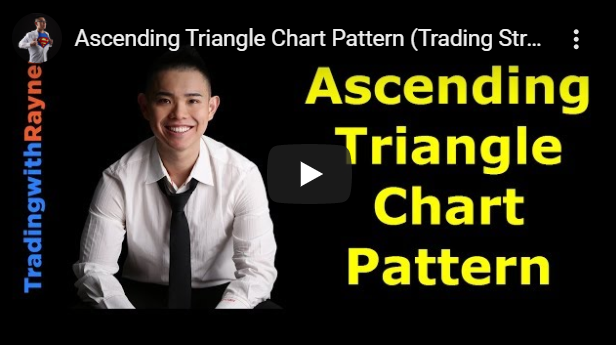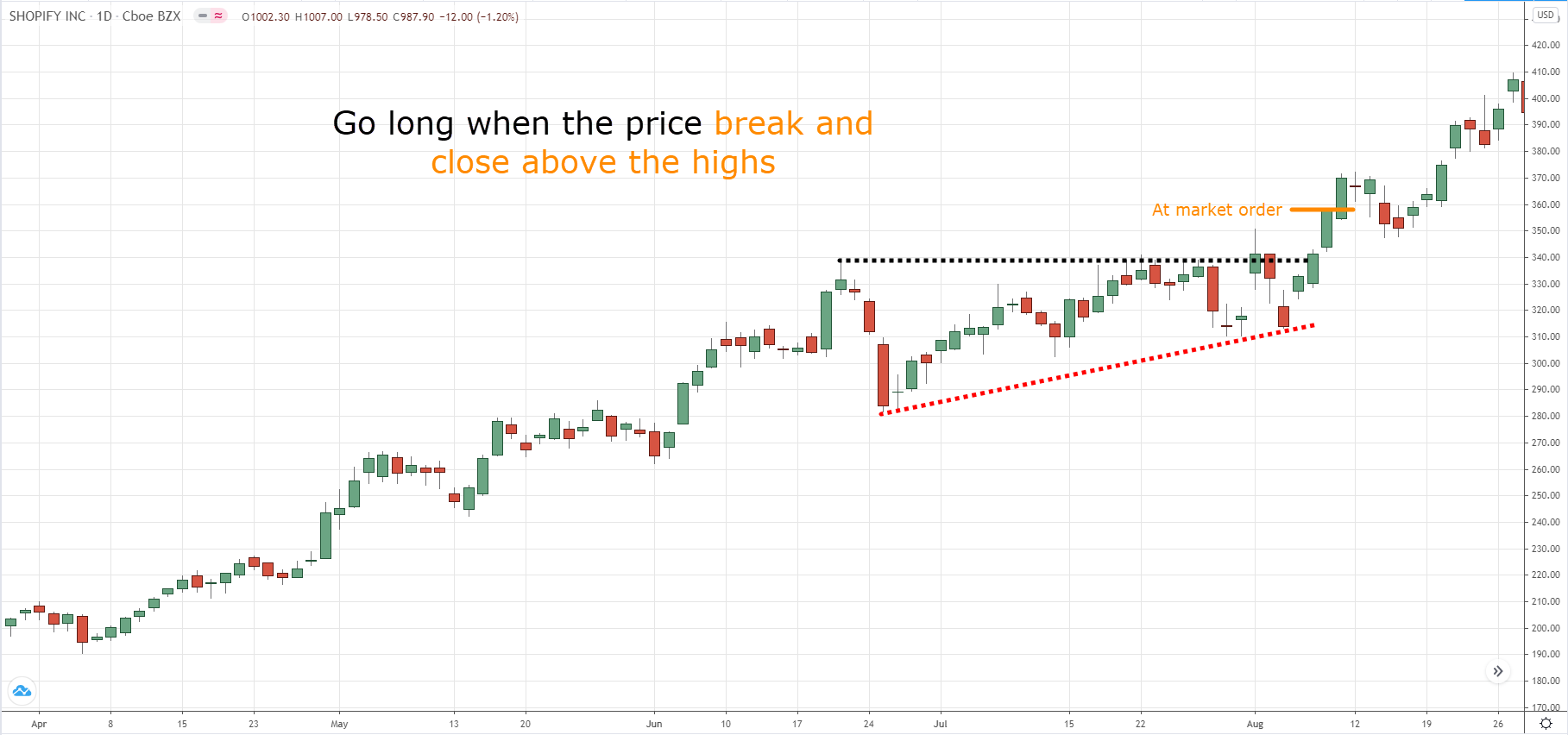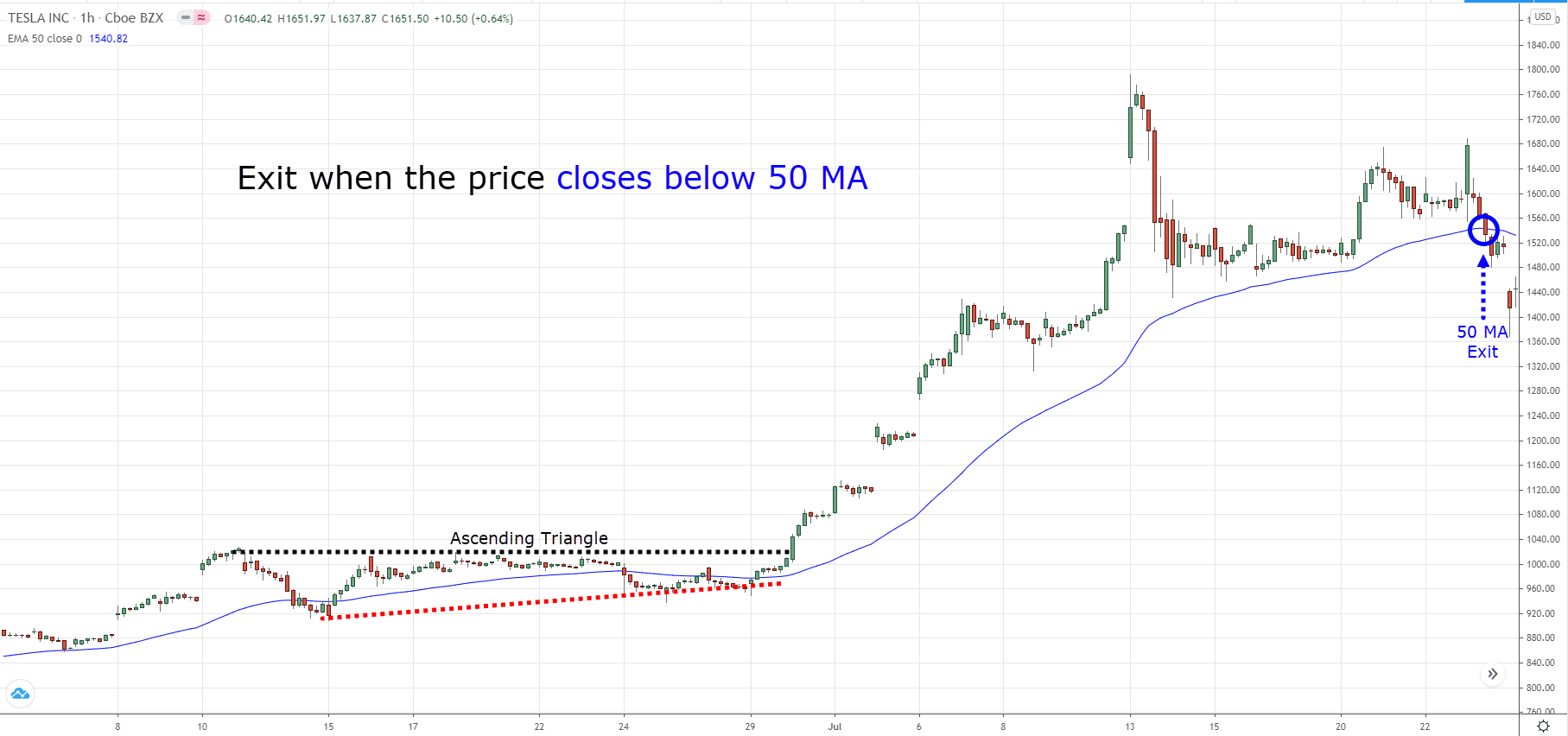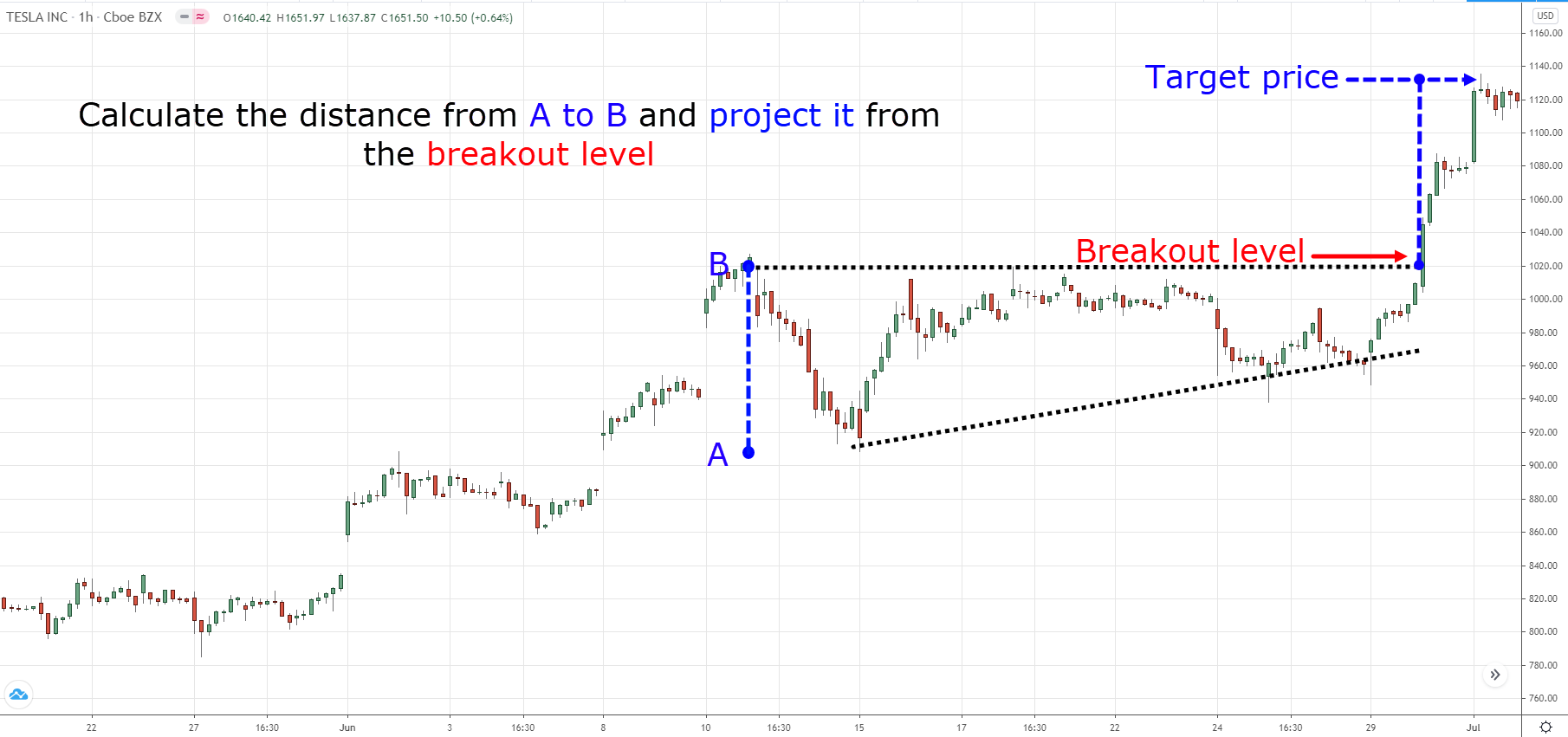Here’s the deal:
I’m not a chart pattern trader.
However…
I LOVE trading the Ascending Triangle chart pattern.
Why?
Because when other traders get stopped out, they help “push” the market further in your favor.
In short, you PROFIT from the stop orders of losing traders — and that’s why it works.
Clearly, this is a powerful chart pattern if traded correctly.
That’s why I’ve created an entire blog post on how to trade the Ascending Triangle step by step.
You’ll learn:
- What is an Ascending Triangle and how does it work
- Don’t make this mistake when trading the Ascending Triangle (that most traders never realize)
- How to better time your entries using one of these 3 techniques…
- How to set your stop loss so you don’t get stopped out before the market moves in your favor
- When to exit your winning trades for maximum profits
Or if you prefer…
You can watch this training video below:
What is an Ascending Triangle chart pattern and why does it work
The Ascending Triangle is a bullish chart pattern that signals the market is about to head higher.
Here’s how it looks like:

As you can see, the Ascending Triangle has a series of higher lows approaching Resistance.
This is a sign of strength for 3 possible reasons:
- The buyers are willing to buy at higher prices
- There is lack of selling pressure
- Buy stop orders are clustered above Resistance
I’ll explain…
1. The buyers are willing to buy at higher prices
Here’s the deal:
If the buyers are not willing to buy at higher prices, you won’t see higher lows coming into Resistance.
The fact the market can form a series of higher lows tells you that there is demand even as the price continues higher.
2. There is lack of selling pressure
Now if there’s strong selling pressure, the price shouldn’t remain at Resistance for long. Instead, it should move lower quickly.
But, if the price is still hovering near Resistance, it means there’s lack of selling pressure even though it’s at an “attractive” level.
3. Buy stop orders are clustered above Resistance
And that’s not all…
Because as the price re-test Resistance, more traders will look to short the market and place their stop loss above Resistance.
But what if the market breaks out higher?
Well, these buy stop orders will be triggered and it fuels further price advance.
Pro Tip:
The Ascending Triangle is one of the three triangle chart patterns out there.
The other two are the Descending Triangle Pattern and Symmetrical Triangle Pattern.
Now before you trade the Ascending Triangle chart pattern…
Don’t make this common mistake when trading the Ascending Triangle chart pattern (that most traders never realize)
Now according to most trading textbooks, they’ll tell you to go short when the price is at Resistance, right?
But here’s the deal…
Not every Resistance level is meant for shorting because you must watch how the price approaches it.
Here’s an example…
Let me ask you…
Is this a good time to go short?
No.
Because you’ve learned that higher lows coming into Resistance (an Ascending Triangle) is a sign of strength.
This means the market is likely to breakout higher. And the last thing you’d want to do is go short.
Does it make sense?
Great!
Because in the next section, you’ll learn when is the best time to enter a trade when trading the Ascending Triangle chart pattern.
How to time better time your entry using 1 of these 3 techniques
There are 3 ways to do it:
- Stop order
- Break and close
- Re-test of trendline
Let me explain…
1. Stop order
This approach goes long when the price trades above the highs of the Ascending Triangle.
All you need to do is place a buy stop order and you’ll immediately be long when the price trades above the highs.
An example:
Pros: This is one of the best prices to enter if the breakout is real.
Cons: It might be a false breakout.
2. Break and close
This is similar to the previous approach.
The only difference is you wait for the price to break and close above the highs.
Here’s what I mean:
Pros: It reduces the likelihood of a false breakout.
Cons: If the momentum is strong, you’ll enter your trade at a much higher price
3. Re-test of trendline
If you’re an advanced trader, you can even enter the breakout before the breakout.
How?
By going long when the price re-tests the trendline (of the Ascending Triangle).
An example:
Pros: Favorable risk to reward on your trade if the market does break out.
Cons: The market might not breakout.
This is great stuff, right?
And that’s not all because in the next section…
You’ll learn how to set a proper stop loss because the last thing you want is to get stopped out of your trade only to watch the market breaks out higher.
Read on…
How to set a proper stop loss so you don’t get stopped out “too early”
Now it doesn’t matter whether you’re trading the Ascending Triangle, breakouts, pullbacks, and etc. because the concept is the same.
Your stop loss must be at a location where if reached, will invalidate your trading setup.
This means if the market hits stop loss, you automatically know you are wrong.
So look at the chart below and ask yourself…
Where should you put your stop loss?
A – This isn’t a good level as the price is within the Ascending Triangle
B – This is an ideal place to set your stop loss because if the market reaches it, you know the Ascending Triangle pattern is “destroyed”.
Moving on…
Where to exit your winning trades for maximum profits
So…
You’ve identified an Ascending Triangle chart pattern.
You long the breakout and the market moves in your favor.
Now you’re wondering:
“How do I exit winners?”
Well, here are 2 techniques you can consider:
- Trailing stop loss
- Price projection
I’ll explain…
1. Trailing stop loss
The idea of a trailing stop loss is this…
You’ve no idea how long the trend will last. So you trail your stop loss and “lock-in” your gains as the market moves in your favor.
So how do you trail your stop loss?
Well, you can use an indicator like Moving Average.
Here’s how:
If you are long, then you can trail your stop loss using the 50-period moving average.
This means you’ll hold your position until the market breaks and close below the 50-period moving average.
Here’s what I mean…
Some of you might be wondering:
“But why the 50-period moving average?”
Look:
There’s nothing magical about the 50-period moving average.
A better question is to ask is…
“What type of trends do I want to capture?”
For long-term trend, you can use the 200-period moving average.
For short-term trend, you can use the 20-period moving average.
Now if this technique is not for you, then you can check out…
2. Price projection
This is a classical charting principle technique to project where the price will exhaust itself.
It can be used on chart patterns like Ascending Triangle, Head & Shoulders, Double Bottom, and etc.
So here’s how it works for an Ascending Triangle chart pattern:
- Calculate the width of the Ascending Triangle (from the high to low)
- Add this amount to the breakout level and that’s your price projection
An example…
Some of you might be wondering:
“But why the 50-period moving average?”
Look:
There’s nothing magical about the 50-period moving average.
A better question is to ask is…
“What type of trends do I want to capture?”
For long-term trend, you can use the 200-period moving average.
For short-term trend, you can use the 20-period moving average.
Now if this technique is not for you, then you can check out…
2. Price projection
This is a classical charting principle technique to project where the price will exhaust itself.
It can be used on chart patterns like Ascending Triangle, Head & Shoulders, Double Bottom, and etc.
So here’s how it works for an Ascending Triangle chart pattern:
- Calculate the width of the Ascending Triangle (from the high to low)
- Add this amount to the breakout level and that’s your price projection
An example…
But…
One of the issue with price projection is the market can almost hit your target profit, and only to do a sudden reversal.
Sometimes, it can even reversal all the way back and hit your stop loss.
So, what should you do?
Trailing stop loss and price projection combo
Well, you can combine both techniques!
This means if the market moves in your favor but it hasn’t reached your price projection level, you can utilize a moving average to “lock in” your open profits.
So, even if it does a sudden reversal, you still “protect” what you have and not give everything back to the market.
Frequently asked questions
#1: What should I do if the ascending triangle is forming against the trend?
I would caution against going long because after all, that would be trading against the direction of the trend. I would expect the market to breakdown lower and so I’ll look for trading opportunities on the short side.
#2: Can I use the ascending triangle pattern for both trend continuation and trend reversal?
Yes, you can. But for trend reversals, you want to have a longer duration for the ascending triangle pattern to form, ideally 100 candles.
Conclusion
So here’s what you’ve learned today:
- The Ascending Triangle is a powerful chart pattern that exploits the stop loss of losing traders
- Don’t short the market if you spot an Ascending Triangle because the market is likely to move higher
- You can time your entries by using a buy stop order, waiting for a break and close, or a re-test of trendline
- Your stop loss should be placed at a level where if the market reaches it, the Ascending Triangle chart pattern will be “destroyed”
- You can exit your winning trades using a trailing stop loss, price projection, or a combination of both
Now here’s my question for you…
Do you trade the Ascending Triangle chart pattern? Why or why not?
Leave a comment below and share your thoughts with me.










I never have before but this makes so much sense and im going to give it a try when I spot this. Thank you so much for your emails.
Good luck, and be consistent!
Thanks for your tips, always spot on.
You’re welcome Ed!
I trade the ascending triangle and in all honesty I first learned the concept from you but I didn’t learn how to take profit but your explanation here is top notch and will help alot going forward.. thanks but please do cover other pattern especially those triangle, thanks one more time
Thanks for the feedback, surely there are more to come!
Rayner I am gathering more knowledge from your experience in financial market as I read and apply your strategies its makes me a better trader. Thanks
You’re welcome Leci, keep it up!
I read this thread with kin interest. You have done a good job with it. I haven’t been trading the Ascending Triangle because I am yet to spot it. Going forward, I start looking out for it.
Thank You So very Much for the session
You’re welcome, Mykels!
We’re happy to know that
I haven’t traded the ascending triangle before but I think I might start trading it when I spot it, thank you very much for this knowledge I always learn a lot from you 🙏
You’re welcome Akinz, and please start on a demo account first to try it out!
Thanks❤🌹🙏 rayner bro… Nice explanation to trading concept…. I am reading daily your blogs…. And really improve my trading style… Thanks🌹❤ bro… God bless you.. Your family👪
You’re welcome, Niranjan!
Great to hear that!
I always trade it when the break up candle close
Thanks for sharing, Adama!
Yes, Because it’s a powerful setup
For sure!
Thanks for sharing, Anthony!
Yes anytime I spot it
Thanks rayner
You’re welcome, Theophilus!
The ascending triangle pattern is actually my favourite pattern because of its simplicity and easy to identify. However, my ascending triangle pattern breakouts trades sometimes failed,even when I exercise discipline in placing the trade.
Hey there Mohammed, keep it up and practice on a demo account first if you must!
I got value sir,tnx for ur tips.
So the descending triangle would be the inverse of the ascending triangle, right??
And if am correct, ascending triangle suggests the market will buy,when it formed?
Yes, that’s right!
And yes, if the market breaks out of the ascending triangle, then you can consider it confirmed!
I think it’s a very good idea, I’ll start looking out for the Ascending triangle. Thanks for the shared knowledge.
Great idea, Mearly!
You’re welcome!
Good article
Thank you, Manish!